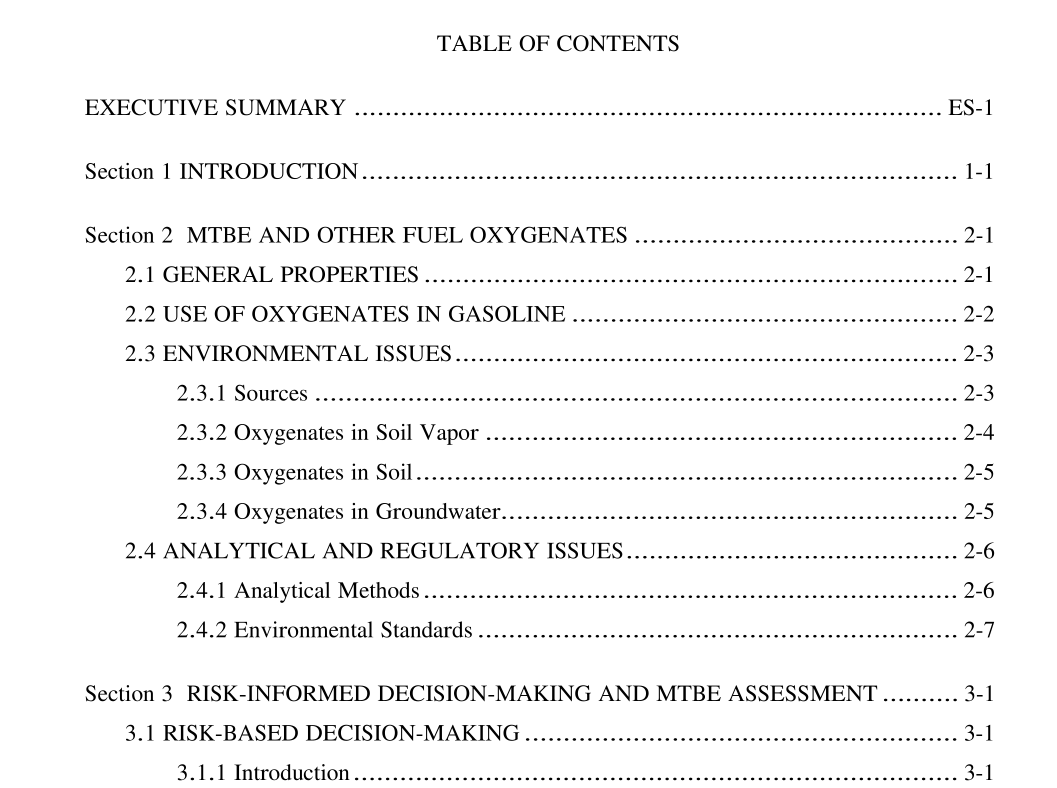API Publ 4699 pdf download

API Publ 4699 pdf download.Strategies for Characterizing Subsurface Releases of Gasoline Containing MTBE
The greatest concerns associated with gasoline releases have traditionally been non-aqueous phase liquids (NAPL) and dissolved-phase benzene, toluene, ethylbenzene, and xylenes (BTEX). The site characterization techniques commonly used by industry were originally developed to meet regulatory requirements for NAPL and BTEX. Over the past decade, however, there has been increased use of oxygenated compounds in gasoline, particularly methyl tertiary-butyl ether (MTBE). The chemical properties and subsurface behavior of oxygenated fuel additives are different from those of BTEX or other petroleum hydrocarbons, and so a reevaluation of traditional site characterization procedures is warranted. This technical bulletin uses the principles of risk-informed decision making to guide the evaluation of sites affected by MTBE or other oxygenates. It includes an introduction to the properties and uses of MTBE, provides guidance for conducting assessments at MTBE release sites, and reviews modern assessment tools and techniques for characterizing and monitoring MTBE in the subsurface. While the primary focus of this study is on MTBE, other fuel oxygenates are also addressed. Risk-informed decision making is a management strategy that adds exposure and risk considerations to the traditional technical, social, and economic components of the corrective action process. The risk-informed approach presented in this bulletin uses site-specific risk factors to help determine the appropriate level of assessment at oxygenate release sites. It includes a review of the various risk factors associated with oxygenate sources, pathways, and receptors. Based on these factors, three levels of assessment are recognized. The standard level is appropriate for the greatest number of sites: it includes moderate sample spacing with some vertical characterization, as well as horizontal characterization.
Receptor characterization should consider current uses and probable future uses of affected groundwater. Once receptors are characterized and an initial level of effort is established, a subsurface investigation may then be conducted to obtain detailed information about sources and pathways. The source and pathway data should be carefully reviewed as it is collected, and the level of assessment should be “upgraded” or “downgraded” accordingly. This bulletin includes a detailed overview of the tools and techniques used in the field for source and pathway characterization and subsequent monitoring at oxygenate release sites. Since traditional assessment approaches have been addressed in previous API publications, this bulletin focuses on newer technologies that allow rapid collection and field analysis of soil, soil-gas, and groundwater samples. The bulletin includes a review of the expedited site assessment process, which is particularly well suited for oxygenate assessment. It also provides a comprehensive guide to modern direct-push assessment and monitoring tools, with emphasis on their proper use at MTBE-affected sites.
Federal reformulated gasoline (RFG) has been used in some 28 metropolitan areas throughout the United States, beginning in January 1995. It is primarily intended to reduce ozone production, and its use is required year round. Federal RFG must contain at least 2.0 percent oxygen by weight during the summer ozone season, but no particular oxygenate is specified. This oxygen requirement can be met by using 11 percent MTBE by volume, or 5.4 percent ethanol by volume. In April 1996, the State of California mandated the use of “California Phase 2 Reformulated Gasoline” on a statewide, year-round basis. The prescriptive formula for California RFG calls for 1.8 to 2.2 percent oxygen by weight, but this requirement can be waived if equivalent emissions reductions can be achieved using alternative formulations. Thus, California RFG (unlike federal RFG) may or may not contain oxygenates. However, the use of federal RFG (which must contain oxygenates) is still mandated in those parts of California that are required by the CAA to participate in the federal RFG program. Efforts have been made in several states to discontinue the use of MTBE in gasoline. In such cases, ethanol has typically been adopted or proposed as a replacement oxygenate. The State of California has requested a waiver from all requirements for federal oxygenated gasoline and federal RFG, on the grounds that California RFG can meet federal gasoline performance standards without oxygenated additives of any kind.









